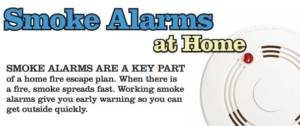 This program is designed for residents of the Central Yavapai and Chino Valley Fire Districts. We will provide free battery operated smoke detectors for those who cannot afford them. We will also test and replace batteries as needed and instruct residents on their care and maintenance.
This program is designed for residents of the Central Yavapai and Chino Valley Fire Districts. We will provide free battery operated smoke detectors for those who cannot afford them. We will also test and replace batteries as needed and instruct residents on their care and maintenance.
Firefighters will install a properly located, battery operated smoke detector at no charge.
Smoke Detectors are indispensable tools for life safety but they require proper installation and maintenance. Location is critical. Caring for smoke detectors is a quick and easy task. Check the following recommendations or contact the Fire Prevention Division with any questions.
- Roughly half of the fire deaths in residential occupancies are a result of not having a working smoke detector.
- Homes with smoke alarms typically have a death rate that is 40-50% less than the rate for homes without alarms.
- In one-quarter of the reported fires in homes equipped with smoke alarms, the devices did not work. Households with non-working smoke alarms now outnumber those with no smoke alarms.
- Why do smoke alarms fail? Most often because of missing, disconnected or dead batteries.
- Every home should have at least one smoke detector in the vicinity of sleeping rooms and on each level of living space including the basement.
- Test battery operated smoke detectors weekly.
- Electrical (AC) powered smoke detectors should be tested monthly.
- Replace batteries at least once a year.
- Daylight savings time is a good day to remember to replace batteries.
- Keep the outside cover of the detector free from dust and dirt by lightly vacuuming the outside.
- Do not take apart a smoke detector.
- Replace smoke detectors that are over ten years old
Fire Facts:
- Fire in your home can turn a familiar environment into a confusing maze. Develop a home escape plan and practice with your family.
- Smoke kills — most fire victims die from smoke inhalation long before the flames reach them.
- More fire deaths occur when people are sleeping, between 2 a.m. and 6 a.m.
- Fire increases in temperature quickly.
- According to the NFPA, you have less than two (2) minutes to escape your house.
In a fire, seconds really do mean the difference between life and death. A properly located, working smoke detector can give you those valuable seconds to get you and your family outside to safety.
Smoke alarms may contain different or multiple sensors
There are two main types of smoke alarms, which are categorized by the type of smoke detection sensor, ionization or photoelectric, used in the alarm. A smoke alarm uses one or both methods to warn of a fire.
Ionization detectors contain a chamber with two plates that generate a small continuous electric current. When smoke enters the ionization chamber, the smoke particles disrupt the current flow which triggers the alarm.
Photoelectric detectors use a light beam and light receptor (photocell). When smoke is present between the light and receptor, depending on the type of smoke chamber configuration, the reduction or increase of light on the photocell sensor triggers the alarm.
